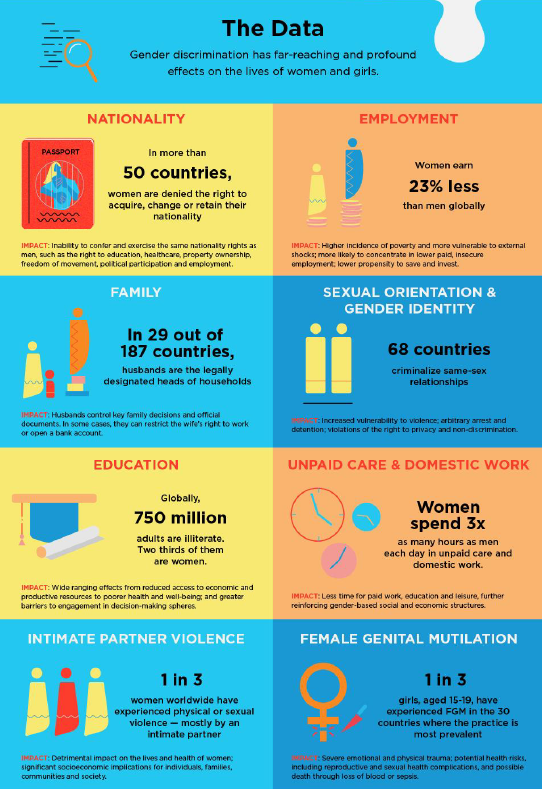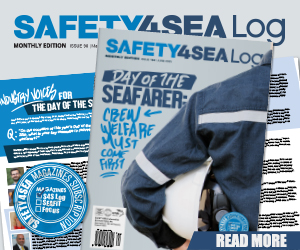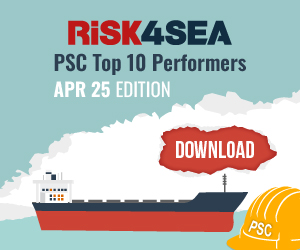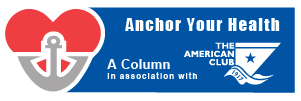If we had to choose one – or maybe two – words to describe 2019 for the shipping industry, these would be: human-focused. Despite the fact that 2020 sulphur cap was on everyone’s mind this year, we saw many significant developments in key human areas. From mental health issues, to women in shipping and safety culture, the industry seems to be putting its people first, trying to boost equality and – most importantly – safety.
- Year in review: How the maritime security landscape evolved in 2019
- Ten shipping books we read in 2019
- Year in Review: Timeline of smart shipping developments in 2019
- Year in Review: Top shipping stories to remember from 2019
- Year in Review: Shipping’s 2019 highlights
- Year in Review: Environmental issues that caught shipping’s eye in 2019
Women in Shipping
During 2019, shipping forwarded a great message to advance gender equality. On 26 September, the global maritime community celebrated the annual World Maritime Day, under the theme “Empowering Women in the Maritime Community”. Gender equality has been recognized as one of the key drivers to enhance diversity and therefore efficiency in the business world, and especially in the male-dominated shipping sector.
Committing on preserving the legacy of World Maritime Theme for 2019, IMO adopted a resolution on “Preserving the Legacy of the World Maritime Theme for 2019 and achieving a Barrier-Free Working Environment for Women in the Maritime Sector”.
The resolution calls governments, maritime administrations and the industry to:
- Share of best practices in achieving gender equality.
- Collect, consolidate and analyse data relating to the participation of women in the maritime sector, in order to establish an evidentiary foundation that will set baselines
- Identify gaps and inform policies aimed at removing barriers and increasing female participation in the sector.
- Encourages IMO, and its relevant subsidiary bodies to take into consideration gender equality, including the fostering of a safe environment for women in the maritime sector, and integrate these considerations into their work.
- Open dialogue and wider engagement between the Member States and observer delegations is encouraged.
Commenting on gender equality in shipping, IMO Sec-Gen, Kitack Lim, stated that:
To ensure its own sustainability, shipping needs diversity in the workforce. Diversity is better; it’s better for teamwork, better for leadership – and better for commercial performance. This video from ICS reinforces the fact that the industry is fully embracing this idea. I am sure it will help spread the word about how important it is to support and promote women in the maritime community
SAFETY4SEA focused on this matter as well, and in our CAREER Watch column we asked from the winners of the first CAREER4SEA – EUROPORT Awards, which were announced in early November on the sidelines of EUROPORT, to suggest ways in order to support gender diversity in shipping and give motives to younger generations for investing in a career in the industry.
Our experts suggested that it is about time for shipping to welcome more women, but to do that it must acknowledge talents, either female or male.
Nevertheless, in honor of December 10 marking the Human Rights Day, United Nations Women published an infographic presenting the women’s place, their abilities and the future awaiting.
According to the infographic, 184 out of 194 countries guarantee equality between women and men in their Constitutions as of 2016; However, discrimination against women still exists and is mostly seen in areas: Laws and Policies; Social Norms and Practices and Gender based stereotypes.
Mental health on the spotlight
It was in late February of this year, when a shocking image of a seafarer’s suicide made headlines in social media, making the industry to think bigger on issues related to crews’ mental health.
The publishing of such an image, which has understandably provoked criticism, highlights just one case of many that go unreported around the world every year
In the shipping world, mental health issues relate to the nature of seafarers’ job which is characterized not only by intensive work hours, but also by isolation, being away from family for too long, fatigue, and many others. In the second quarter of 2019, seafarers’ happiness marked a 6.27/10, down from 6.31 in the previous quarter, according to the Seafarers Happiness Index launched by the Mission to Seafarers and Shipowners Club.
In addition, lack of internet access, long periods away from friends and family, poor accommodation and food were among the leading causes of concern for those working at sea.
However, Q3’s “Seafarers Happiness Index” an improvement of seafarers’ wellness onboard vessels, presenting an increasing to 6.59/10 from the previous 6.27, marking a promising and better future in respect of the seafarers and their life onboard.
On the other hand, a study by Yale University to 1,572 seafarers has identified potentially dangerous levels of depression, anxiety and suicide risk among the world’s seafarers. Namely, 25% of respondents had suffered depression, 17% had experienced anxiety and 20% had contemplated suicide or self-harm.
Meanwhile, the study showed employers do not recognize the importance of welfare onboard to the same extent as charities and stakeholders, with 55% of employer respondents stating they had not introduced any practices to address seafarers’ mental health in the last 10 years. In this matter, in the beginning of the year, ISWAN had noted that more needs to be done to change the culture in shipping. This will create more openness and less stigma about mental health.
- Be happy at sea: Focus on activities you love, materials you need, savour the moment when you are involved!
- Connect with others: Communal activities are a good way to increase social interaction and can benefit the wellbeing of everyone on board.
- Become more self-aware: Becoming aware of the reasons we do what we do or what we feel strongly about, can give us a greater sense of fulfilment and wellbeing.
- Track your progress: Think about goals that you can work towards on a daily, weekly, or monthly basis on board.
- Maintain a healthy body: Remain fit and healthy onboard by focusing on regular exercise, enough rest, and healthy diet.
Building resilience
Resilience is the ability to “bounce back” when adverse situations arise. Under this aspect, Shell Resilience program provides seafarers with those soft skills required for them to easily “bounce back; a holistic approach which is weighting physical, mental and spiritual health of seafarers.
The program lets participants learn together. Strengthening and supporting each other. Resilience techniques are practiced using scenarios and the participants share insights on how to apply resilience to their lives and to safety critical situations.
Here at SAFETY4SEA, we give much emphasis on resilience. In fact, we have created a whole column, dedicated only to ways to build resilience.
Dealing with a crisis: This is the epitome of resilience. A crisis is considered as the best resilience training; many people who face an unfortunate event, cannot even believe how strong they really are. Their power and a high level of perceived self-efficacy are brought to light when a crisis comes along.
Making connections: Good relationships with close family members, friends or others are important. Accepting help and support from those who care about you and will listen to you strengthens resilience. Some people find that being active in civic groups, faith-based organizations or other local groups provides social support and can help with reclaiming hope. Assisting others in their time of need also can benefit the helper.
Professional resilience: In maritime organisations, people work under the increasing influence of safety management systems. Stress at work may not be a modern-day phenomenon, but it does sometimes feel that the pressures of technology, cooperation. The need for continuous development affects those working in shipping organisations as well.
Keep things in perspective: The perspective that each person adopts influences how things actually are. Therefore, each individual develops its own reality depending on his feelings and thoughts, given the circumstances. The same decision, event, statement or picture can mean something very different to different individuals or groups.
Take care of yourself: Taking care of yourself is important in every aspect of your life. It is about ensuring that you give yourself the best opportunity you can to maintain your health, creative energy, network of family and friends, and the smartest skills, in order to cope with everyday challenges.
Taking Decisive Action: In every situation, our decisions may have lasting consequences, affecting ourselves and others in the short and long term. In this context, an effective decision making process can help us reflect and weigh the alternatives and finally make the option that is the most appropriate for each situation.
Maintaining a hopeful outlook: Eventually, resilience is all about having a positive state of mind. Many people find it easier to focus on what it is wrong in their life instead of envisaging a better future. This is because problems are real, causing an unpleasant situation; however maintaining an optimistic outlook enables everyone to expect that good days are coming.
Enclosed spaces fatalities a main concern
Enclosed space fatalities onboard ships are a main area of concern for the industry, which is struggling to reduce casualties and keep a decent safety record.
A recent survey by InterManager representing more than 5,000 seafarers from about 250 vessels, showed that seafarers and dock workers are still dying while working in enclosed spaces onboard vessels, “because there is not enough understanding throughout the shipping industry of the risks.”
The main issues identified were lack of improvement in the design of vessels, the tight deadlines for cargo hold and tank preparation, as well as lack of training.
What is more, the International Transport Workers Federation (ITF) underlined a shocking spike in deaths in confined spaces, as a workplace hazard long familiar to the shipping industry. Since January 2018, 16 dockers and 12 seafarers have died from asphyxiation or explosions in confined spaces – or from falls after passing out due to bad air.
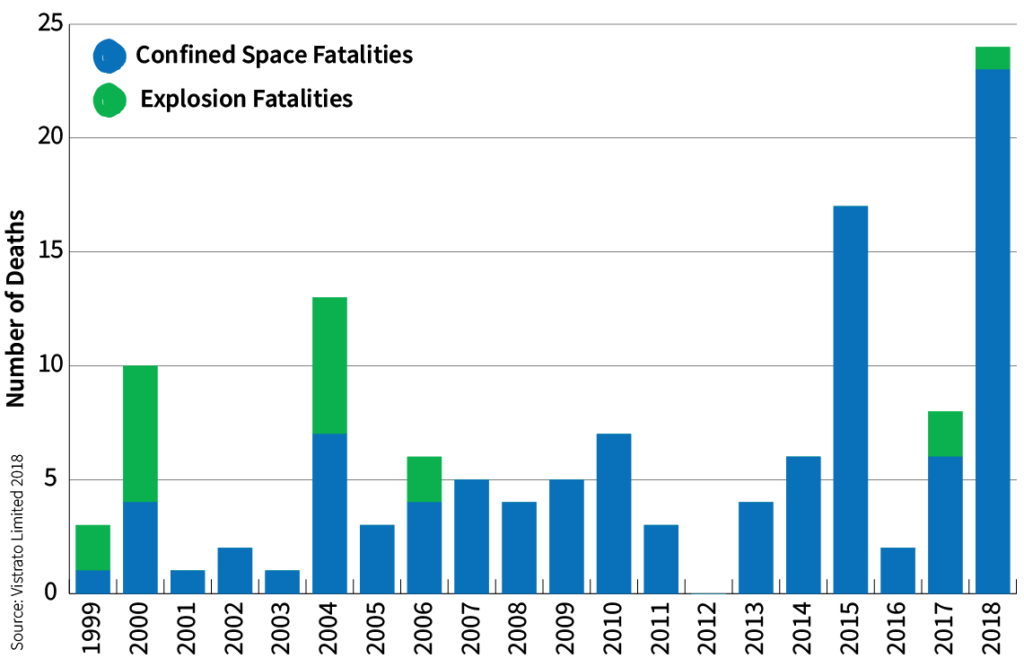
The above raise questions regarding the safety assurance that existing regulations provide for enclosed space entry onboard. When SAFETY4SEA asked industry experts if the industry needs more regulations on enclosed space entry, they seemed divided.
Key arguments supporting the need for more regulations referred to the lack of a unified industry standard on training for enclosed spaces, as normally such training is left to the shipping company. Additionally, the fact of the amount of lives still taken rose as an argument itself.
- Inform: The authority designated to provide permission for entering should be informed. Usually master on board approves the procedure. Some Companies may require an Office approval for such high risk operations.
- Prepare: The team should be thoroughly prepared for both entrance and rescue. Breathing devices, atmosphere meters, means of communication, safety lines, stretchers and adequate lighting should be checked prior entering.
- Check: Measure air conditions in different levels and spaces prior entering. Ensure adequate ventilation.
- Assess: A detailed risk assessment is to be conducted taking into consideration all above items plus any other hazard or risk that may be occur for each space’s considerations.
- Brief – Plan: A toolbox meeting is to be conducted to inform team for step by step execution of procedure. Special comments for roles /responsibilities or for space’s special considerations should be analyzed. A contingency plan is to be established and all communication systems (primary / secondary) to be tested.
- Get Final Approval / Permit for specific time frame of procedure execution.
- As the objective is the rescue from enclosed space, first aid kit and on board hospital readiness should be checked. Emergency backup considerations should be available (Telemedical assistance or MEDEVAC readiness) if required.
2019 was considered by many as a transitional year to 2020 sulphur cap. However, as we have seen, many important developments took place this year. Shipping has made a big step forward to enhance gender equality, while the stigma for mental health is beginning to wear out. These are all important facts, than make the future of shipping seem brighter.



































